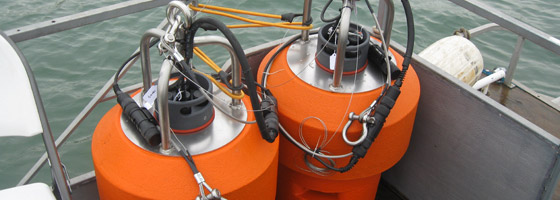Lake Michigan facility seeks NPDES permit renewal

Industrial facilities throughout the country withdraw and discharge water from lakes and streams to use in cooling systems. Thermal pollution occurs when the discharged water is too hot, and then affects the surrounding aquatic ecosystems.
The scores of power plants, paper makers, chemical refineries, and other industrial facilities that use local freshwater to cool their processes are required to ensure that the water doesn’t harm wildlife when it is returned to the rivers and lakes.
To prevent harm from thermal pollution, an industrial facility along Lake Michigan is conducting a study to ensure it continues returning borrowed water to the lake without jeopardizing aquatic health. AECOM, an environmental consulting firm and the facility’s consultant, completed the first phase of a thermal discharge study last October in order to renew the facility’s National Pollutant Discharge Elimination System (NPDES) permit.
During a four-week field survey last fall, AECOM used field data and a numerical model to determine whether the thermal plume from the discharge point exceeded the allowed 1,000-foot mixing zone. The receiving water temperature in Lake Michigan cannot be 3 degrees Fahrenheit greater than existing background temperatures outside of the mixing zone. The current NPDES permit allows the facility to exceed normal temperature limitations if it can demonstrate the discharge does not adversely affect aquatic life.
The project team set up 13 mooring locations to monitor water temperature and variance at different depths and distances from the point source. NexSens MB-100 data buoys were deployed at each location. They were equipped with SDL500C submersible data loggers with cellular telemetry and T-Node temperature strings. The data loggers transmitted readings twice daily and were powered using D-Cell alkaline batteries, said Fondriest Environmental’s Paul Nieberding, who worked with AECOM on designing and deploying the monitoring system.
“We had all 13 buoy systems turned on and transmitting data when they shipped,” he said. “This way, they did not need to do any programming at the site — just drop the buoys in the water.”
The mooring locations ranged from shallow near-shore areas to locations 3,000 feet off shore in water about 25 feet deep. Buoys in shallow areas withstood 10-foot waves during two large storms. Fortunately, the NexSens systems were designed to withstand full submersion, Nieberding said.
“Where larger buoys would get tossed around in severe wave action, the MB-100 acts more as a bobber and can take a submersion if needed,” he said.
The field data collected by the buoys was used to calibrate and validate an environmental fluid dynamics computer model. AECOM used this three-dimensional simulation of the receiving water to predict theoretically worst-case scenarios that could not be measured in the field due to limited time. The project team took a virtual look at what would happen to water temperatures during the warm summer months and cool spring months, adjusting for current and wind direction.
Once the virtual and raw data were collected and analyzed, the results showed the thermal plumes would exceed the 1,000-foot arc during theoretically worst-case scenarios. The facility will now need to move to Phase 2 of the project to prepare an updated 316(a) thermal variance demonstration when applying for their NPDES permit renewal. This will include a biological assessment of the aquatic environment affected by the effluent, a description of the important species possibly affected, and a hydrothermal assessment. The Phase 2 plan will be submitted to the regulatory agency sometime next year for approval of the variance.
System Description
AECOM’s multi-point temperature monitoring buoys consisted of the NexSens MB-100 data buoy, SDL500C cellular data logger, and T-Node temperature string delivered as a pre-built system ready for deployment.
The MB-100 data buoy is designed to withstand rough waters in both surface and subsurface applications. It features an inner core of cross-linked polyethylene foam with a heavy polymer skin. The stainless steel frame secures the foam in place and serves as an attachment point for mooring line.
The SDL500C cellular data logger is a self-powered remote data logging system designed to be secured within the MB-100 data buoy. The system is configured with an internal cellular modem, along with five ports for connection to digital and analog sensors. Internal circuit boards and communication modules are shock mounted, and all access ports incorporate redundant sealing for use in harsh environments.
NexSens T-Node temperature sensors feature an integral digital sensor secured in a protective housing for temperature profiling in fresh, brackish, or seawater. For this application, the sensors were connected in-series using UW underwater cables, attached along a mooring line, and suspended vertically in the water column.
About AECOM:
AECOM is a global provider of professional technical and management support services to a broad range of markets, including transportation, facilities, environmental, energy, water and government. For more information, contact Ben Zhang at Ben.B.Zhang@aecom.com.




0 comments